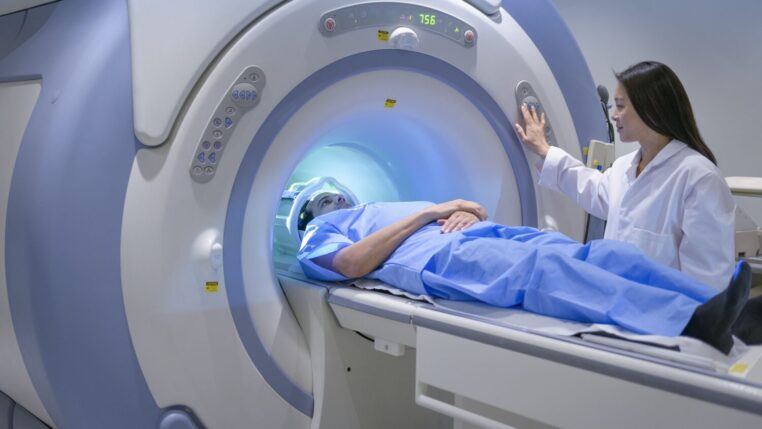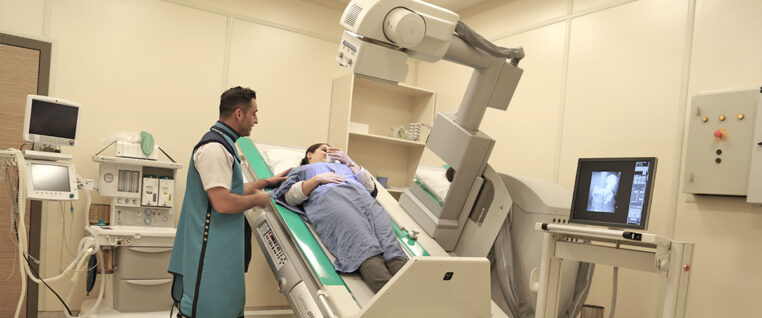In many ways, these two procedures are rather similar. This is the primary reason why many people see them as one of a kind. The one that rings a bell to everyone is of course radiography as it is better known as x-ray examination. Once stated like this, you’ve heard of it, right? It is based on the usage of gamma rays. Thanks to them we can take a static picture of the internal parts of our bodies. On the other hand, fluoroscopy is a little bit different.
Unlike the x-rays, it does not offer a static image of our internal parts. No! Instead what it provides is the moving picture of our bodies. You probably had a chance to see an x-ray result and in many ways, it is no different than a picture of old created with black and white technology. Fluoroscopy is the same in that regard with one slight difference that it doesn’t look like ancient photography but the first attempt at animation. These are the few lines on both in general terms, but we’re not going to remain on this. Instead, in the part below we are going to talk about both in-depth. Once you finish reading this article you’ll be well versed in telling difference between the two at all times. Let’s talk radiography first.
What is Radiography?

So, radiography or x-ray is used to diagnose various types of internal injuries. When you have an injury that can’t be seen from the outside, this method is used. The physical examination can take you only so far. This is why it’s amazing to have this tool, which is in use for more than a century. The images it creates come to life when electromagnetic radiation is applied to our bodies. If you require this treatment you cud consider visiting w-radiology.com as they are experts in all things x-ray. And, no, it will not aid you in any way to become an X-Men. Leave that to Hugh Jackman and the gang.
Radiography is used in medicine since its inception as it found an appliance there from the get-go. Regarding injuries that will take you to visit a radiologist or an orthopedic doctor x-rays will be sued to determine the level of your injuries and to determine what was injured in the first place. It is used in a manner that allows the doctor to get a visual of your injury or to determine which illness you have and how far has it progressed. There is a misconception that undergoing x-ray treatment will expose you to radiation, but the levees present are not enough to harm most individuals. There are exceptions of people who are not allowed to undergo this treatment but they are few and far between, and in most cases, there’s a serious doctor’s recommendation for a person not allowed to expose himself to x-ray treatment.
Fluoroscopy

As we said, the two treatments are similar in many ways. Compared to x-rays, fluoroscopy is quite a modern invention. But, in its essence, it provides similar results when it comes to the treatment of various conditions. It works on the same principles and for the best part, it uses the same technology. The difference is the image it creates. Some would argue that it offers more in some departments considering that it gives and live image, a video that is. Thanks to it you can see our organism moving and functioning in real-time which is a great help in approaching treatments.
It finds its way into medicine quite fast once incorporated and doctors all over the world use it in various ways. For the most part, it is applied when it comes to finding smaller blood vessels that are needed for catheters and needles. Fluoroscopy aids in giving the doctors and nurses the necessary precision. Furthermore, while catheters are seen as the basic medicine, they’re also applied when installing stents. In other instances, the usage of fluoroscopy is seen in the performing of Angiograms, with patients who need enemas and other gastrointestinal procedures, and of course various orthopedic surgeries. Both radiography and fluoroscopy have been amazing since they found their way onto medicine where for the most part are applied.
The Difference
As you can see from the text above, there are similarities and differences between the two procedures and how, how, and when they’re used. But, we’re going to go through it in another few lines. So, as we said, the technology between the two is quite the same. There’s no arguing that. But, there are differences. That’s what we’re going to talk about in this paragraph. In both cases, a small portion of the radiation is used to cast an image on a certain part of our body. This is done so that we would get a clear image of an injury or a condition.

Here we’re going to go back to the first part of our article and reiterate that an x-ray provides the user with a static image of an injury or a condition. Fluoroscopy is different in this regard as it offers a video format of the same thing. The latter is used to catch the movement in specific parts of our body to determine the severity of the condition.
For the best part, people are introduced to fluoroscopy when it is used by using a contrast which then highlights parts of our bodies or just specific parts of our organism. This is quite an interesting view of our bodies, and it is best used when examining our blood vessels, during the search for ulcers, and as we already mentioned during the search for narrowed blood vessels which could result in a need for a stent.
In the end, while x-rays are considered a more dangerous option, that just isn’t true. Radiography is a process that is necessary only once in most situations for specific treatments. During that one exam, you’ll be exposed to a certain amount of radiation. On the other hand, fluoroscopy is a process that in most cases needs to be repeated. That’s why your radiation exposure will be longer.
